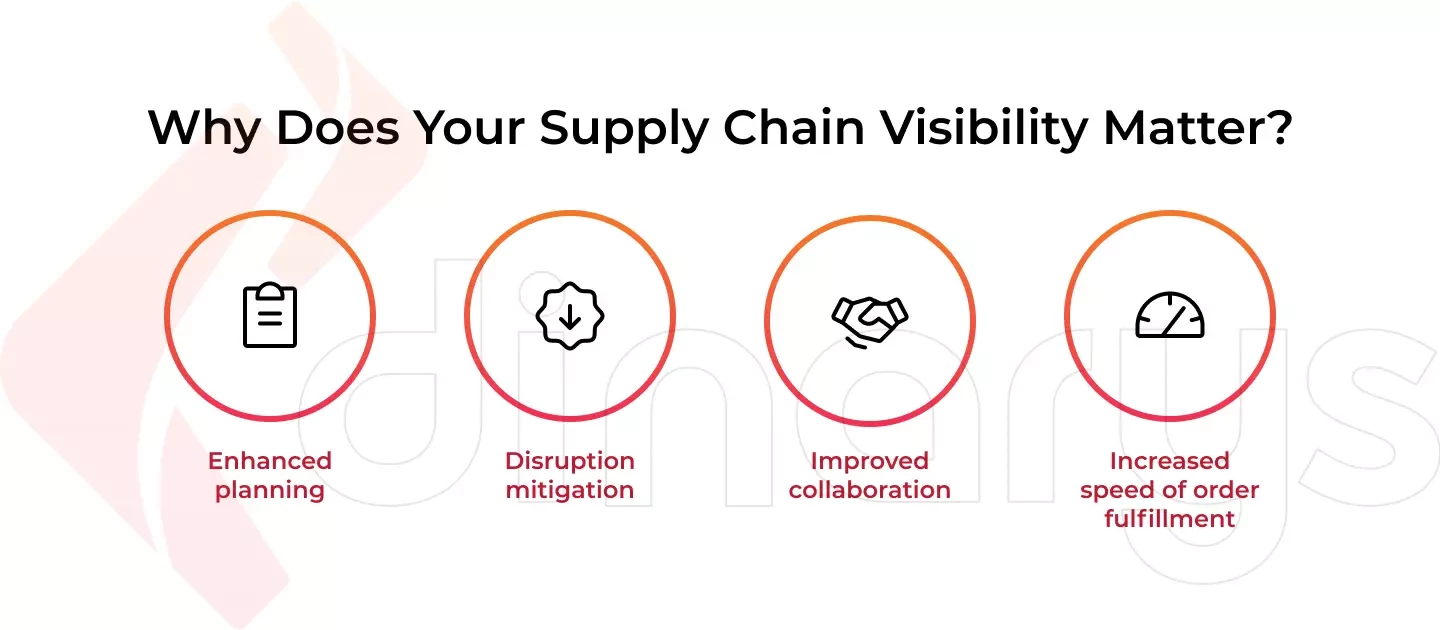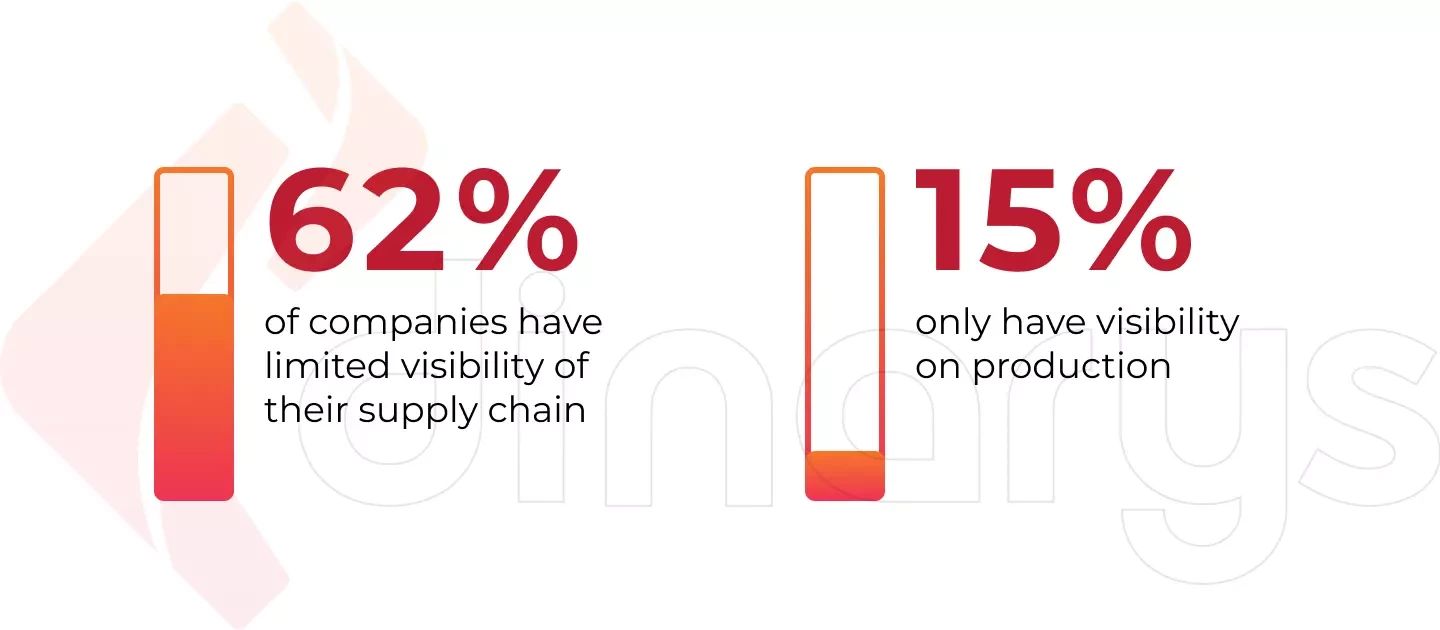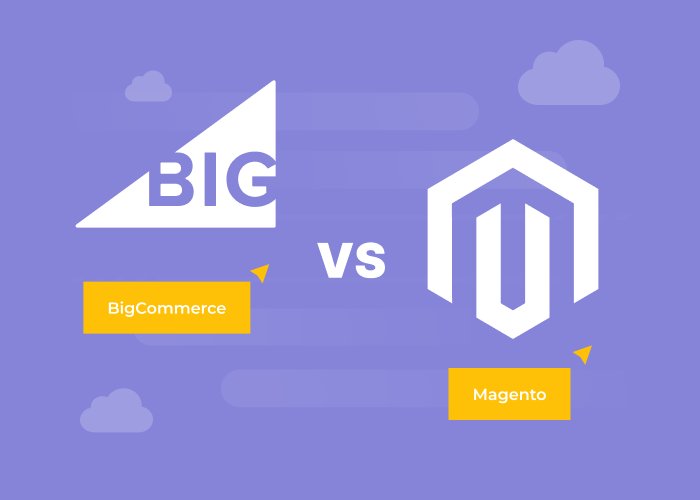Content
Supply Chain Visibility: Definition and Importance

Time to read: 12 minutes
Having ample data visibility within your e-commerce enterprise provides multiple benefits. Tracking, analyzing, and forecasting are valuable activities for businesses because they facilitate considered decision-making and build resilience. Data visibility not only helps merchants achieve higher customer satisfaction, but also allows them to minimize their e-commerce fulfillment costs.
Considering supply chain operations, data visibility is particularly important to ensure the optimal level of stock, avoid overproduction, and deliver the right order at the right time to customers.
This article explores the concept and goals of SCV, the issues that affect it, and the technology you should consider for implementing effective data-driven strategies.
What Is Supply Chain Visibility?

SCV is the ability to track raw materials, components, and merchandise as products are transported from manufacturers and suppliers to end consumers.
As businesses grow, expand their product assortment and branches, and conquer new foreign markets, their supply chain networks gradually become more complex. Thus, businesses must identify potential environmental, social, and governance risks. This creates the problem of tracking data from various sources simultaneously and establishing strong connectivity between different organizations. Consequently, businesses need a reliable system that centralizes all data.
SCV relies heavily on digital technology to enable easy, precise, and secure access to data and to allow different departments, warehouses, and sales channels to monitor, display, and analyze data.
For additional information, read “Top 5 Supply Chain Technologies to Consider.”
Why does supply chain visibility matter?
SCV is a top strategic priority for companies worldwide. Increased SCV has become indispensable for the following reasons:
-
Enhanced planning. Having a centralized system with superb search capacities allows merchants to seamlessly extract data that is difficult to access and to plan future workloads. For example, merchants can forecast seasonal demand and develop related logistics strategies.
-
Disruption mitigation. SCV provides an overall look at supply chain operations. Consequently, merchants can immediately identify problems and react quickly if there are any supply chain disruptions. SCV facilitates robust data analysis and reduces potential supply chain issues, such as transportation bottlenecks, labor shortages, and inventory shortfalls.
-
Improved collaboration and increased speed of order fulfillment. A fully automated supply chain network centralizes product data, people, and business processes in a secure, single source of information. An automated supply chain network encourages transparency and enables efficient collaboration with external supply chain partners, which subsequently allows merchants to obtain supplies in a timely manner and satisfy their clientele with quick order fulfillment.

Types of Supply Chain Visibility
We previously discussed the general concept of SCV, but now let’s explore this concept in detail and explain the exact areas that require visibility. The following section highlights several types of SCV, but please note that they may vary depending on your business and industry.
Visibility into orders and inventory
To successfully fulfill orders, you should balance supply and demand, as well as previously ordered products. Visibility into these areas will help ensure that you do not oversell products or run out of inventory. In addition, this visibility will help you plan and design your warehouse space more precisely and eliminate expenses related to warehouse maintenance.
Visibility into cargo location
The ability to track the cargo location and shipment status of your supply in real time is imperative. Using an automated tracking solution, you can plan a fuel-efficient route for your freight shipping, maintain low costs, and even benefit the environment. Furthermore, you can receive status updates of the location and condition of your cargo while it is in transit, so you can be proactive if any delays occur.
Lets talk about itHave a project in mind?
Visibility into supply chain performance
Tracking upcoming and outgoing shipments is important to daily supply chain management, but visibility into performance is a broader concept in which on-time and in-full (OTIF) metrics come into play.
OTIF measures the delivery performance of a supply chain. Expressed as a percentage, this metric indicates whether your supply chain can deliver an expected product in the quantity ordered by the consumer, at the place stated by the consumer, and at the time expected by the consumer. Simply stated, OTIF indicates whether a company’s logistics can deliver the right product at the right time and meet the customer’s expectations.
An unsatisfactory OTIF level indicates weak performance. Obviously, the COVID-19 crisis considerably affected the OTIF of many organizations globally.
For additional information, read “KPIs to Measure Warehouse Performance and Efficiency.”
Visibility into auditing records
A supply chain audit is one of the most powerful ways to streamline your logistics, lower operational costs, and gain a competitive advantage. Conducting this type of audit is vital for maintaining a healthy supply chain.
During the audit, you should look closely at the relationships with your suppliers and customers and assess the demand-supply ratio, order fulfillment efficiency, manufacturing flow, number of returns, etc.

Technologies that Increase SCV
Rapid technological advancement has proven its value because any business process can now be automated, tracked, and analyzed, including supply chain operations. So, what technology should you use to obtain a comprehensive view of your supply chain?
Internet of Things (IoT)
The IoT refers to connected physical devices that receive and transfer data throughout a wireless network. Although this is a general definition, the IoT can be used to improve SCV.
For example, IoT devices provide visibility into cargo shipping. IoT-based shipping solutions are widely used for creating real-time reports about freight locations and sending notifications about route changes.
Artificial intelligence (AI)
AI has been applied quite broadly in e-commerce and includes conversational chatbots, recommendation systems, personalized searches, etc. It is no wonder that AI is also applied to supply chain activities.

Supply chain managers actively leverage AI tools to predict demand and enhance supplier relationship management. They also utilize AI-enabled computer vision systems to automate and improve the quality control of finished products.
AI is also frequently used for sustainability management by optimizing logistics routes to make supply chain operations greener and businesses trendier.
Lets talk about itHave a project in mind?
Transportation management system (TMS)
A TMS is a logistics system that helps businesses plan, execute, and optimize product transportation, receive valuable data regarding daily transportation operations and trade compliance information and documentation, and ensure the timely delivery of orders.
Typically, a TMS provides various functions that maintain supply chain visibility at a high level. These functions include planning and decision-making, real-time transportation tracking, service quality control, transportation costs and scheme simulation, and freight audits.
Conclusion

Research indicates that 62% of companies have limited visibility of their supply chains and 15% only have visibility into production. SCV may be quite useful for you, as it will give you a competitive edge over rivals who have not yet automated their supply chain activities.
As an e-commerce software development company, we can deliver a package of e-commerce solutions tailored to your specific business needs and requirements. Contact us today to discuss your upcoming supply chain automation project!
Let professionals meet your challenge
Our certified specialists will find the most optimal solution for your business.



